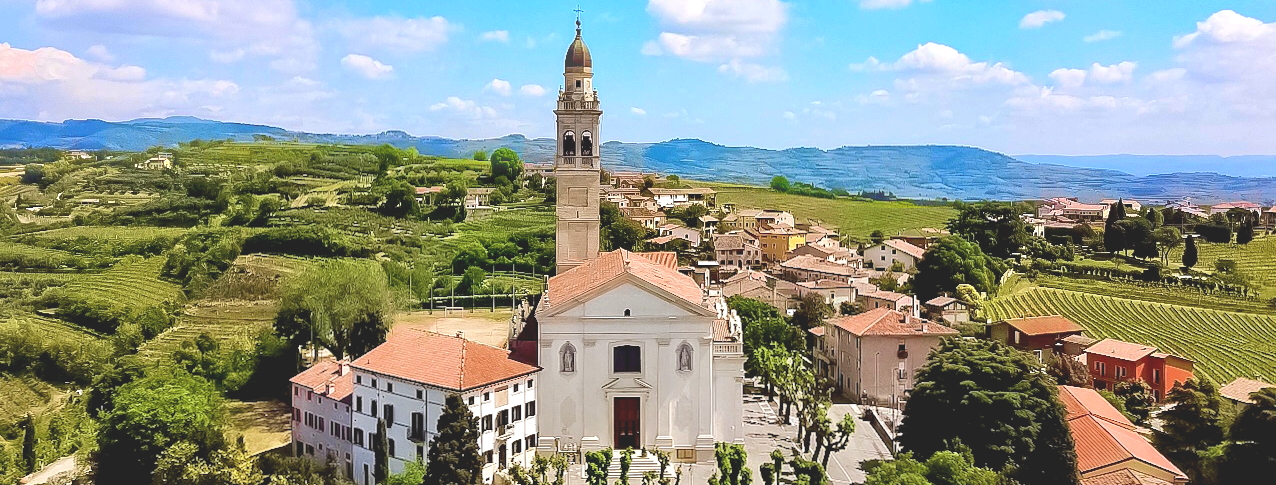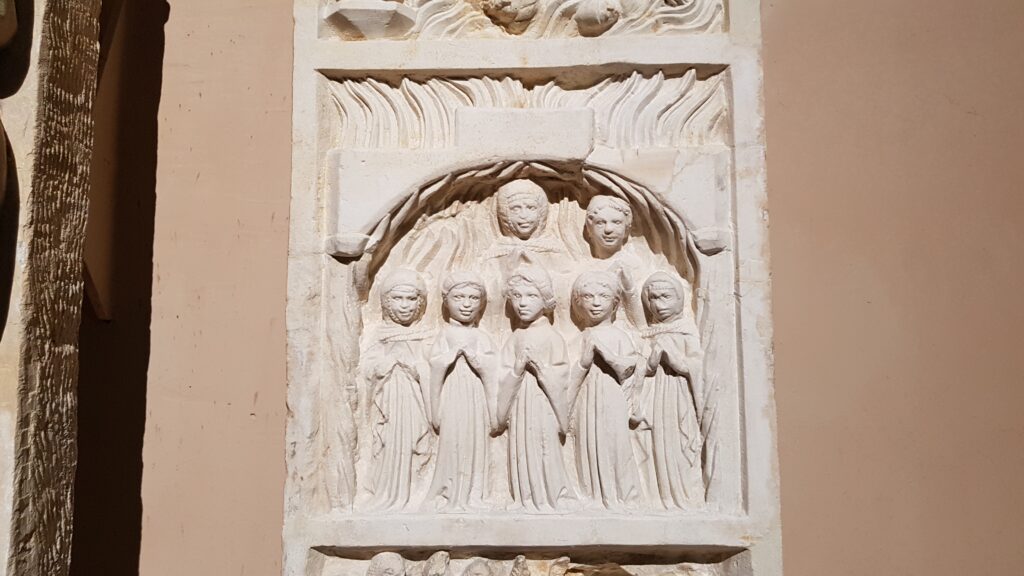The altar was made in 1644 and is marked by its predominant use of yellow, dark pink and gray marbles.
The chapel is decorated with a mid-17th century painting of the Assumption of the Virgin Mary with Saints. Below the Virgin are depicted S. Giovanni Battista on the left, Saint Blaise in his bishop’s robe in the center and S. Rocco on the right.
On the left side of the altar stands a statue of Saint Francis of Assisi wearing his usual robe and meditating in front of the crucifix; at his feet lie a skull and book. This statue dates back to the early 19th century and is traditionally considered the first work of Luigi Antonio Zandomeneghi (1779-1850), a well-known sculptor from Colognola who built his career in Venice. The circular pedestal on which Saint Francis’ statue stands is decorated with a bas-relief carving at the center of which is visible the crest of the minor orders (Christ’s arm crossed with that of a friar).
To the right of the altar, there is a Renaissance statue of Saint Nicholas of Bari made by an unknown Venetian sculptor from the second half of the 15th century.
On the left side of the chapel stands a statue of Saint Anthony Abbot signed and dated by Bartolomeo Giolfino in 1433. The statue is considered one of the artist’s masterpieces and demonstrates a strong link to the late-Gothic world, particularly in terms of its dynamic and unaligned pose. It conserves traces of its original polychromy.
Alongside the statue of Sant Anthony are two bas-relief sculptures that depict The Annunciation and The Crucifixion. Attributed to an unknown artist from the 18th century, these sculptures were commissioned by the Nichesola family and came to the church from the Oratory of the Holy Cross near Villa.
On the right side of the chapel are exposed a series of 15th-century bas-relief carvings that depict the Martyrdom of Saint Blaise and six of his miracles. The carvings were discovered in 1927 under the altar table in the chapel of the Immaculate Conception.
The carving’s central panel depicts the martyrdom of Saint Blaise as he is tied to the cross while two torturers tear him apart with iron combs; at his feet are the fragmentary figures of two kneeling patrons.














